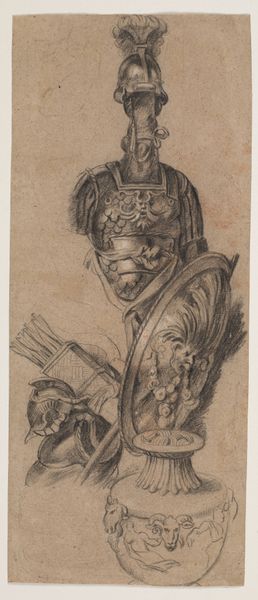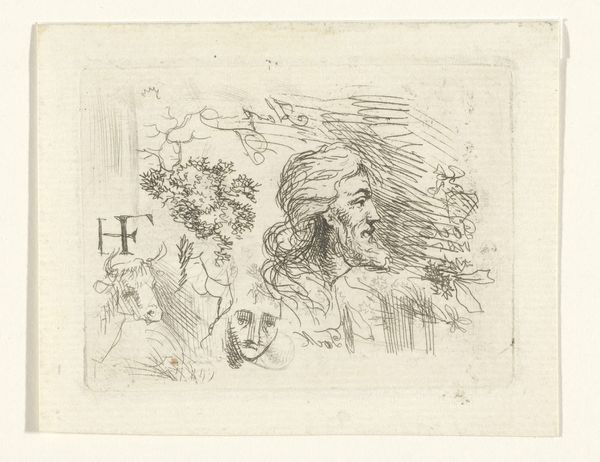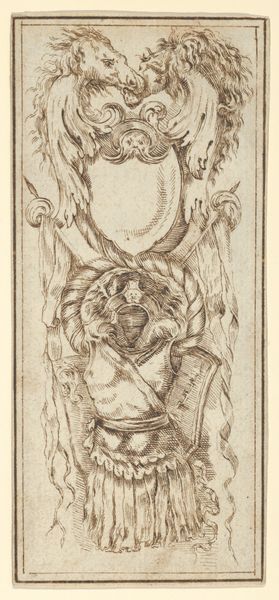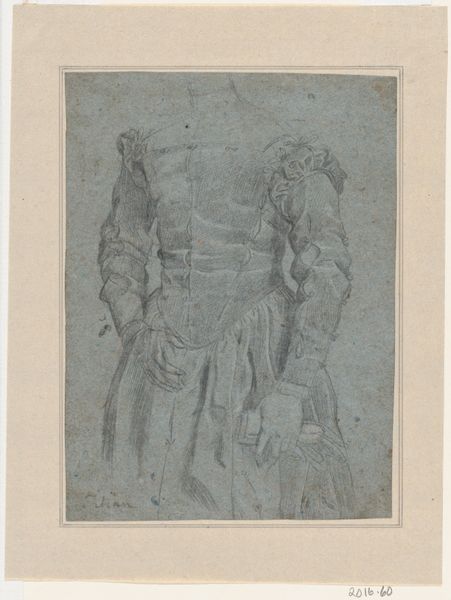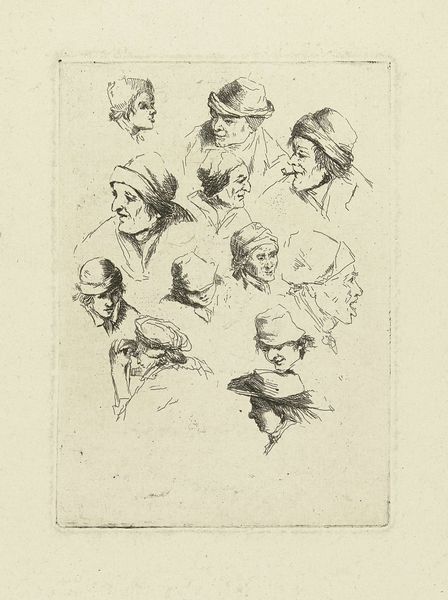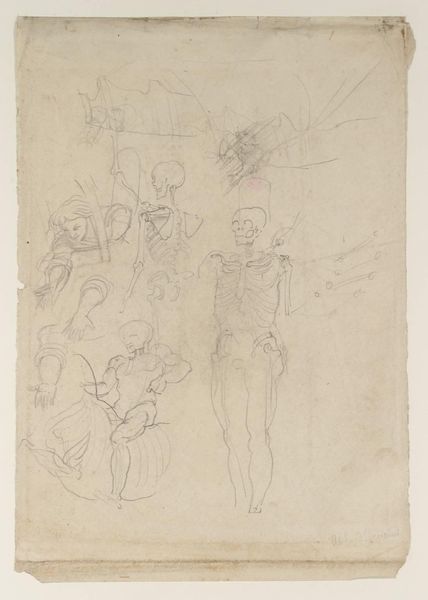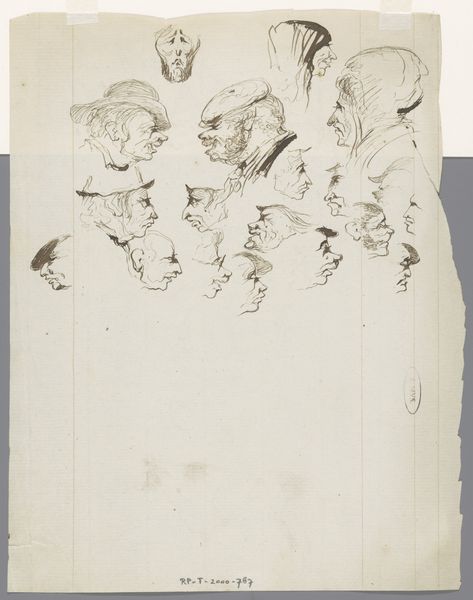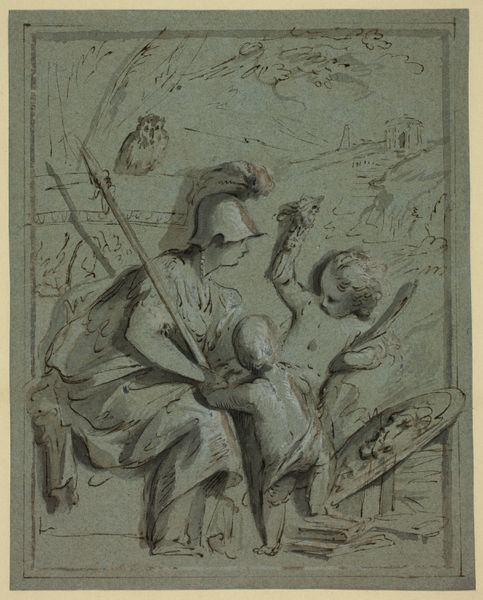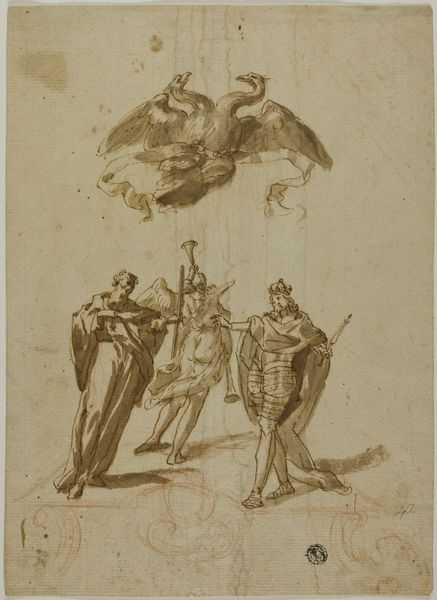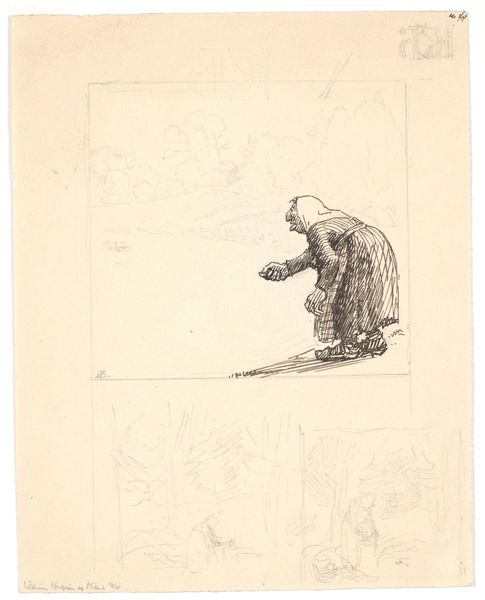
Study sheet with four soldiers' heads, after the Column of Trajan (design for a plate in ''Recueil de différents caractères des testes dessinées d'apres la Colonne Trajane'', etched by J.B. Hutin, published by Gabriel Huquier) 1760 - 1770
0:00
0:00
drawing, pencil
#
portrait
#
drawing
#
pencil sketch
#
pencil
#
sketchbook drawing
#
pencil work
#
history-painting
#
academic-art
#
rococo
Dimensions: height 357 mm, width 258 mm
Copyright: Rijks Museum: Open Domain
Curator: Standing before us is a "Study Sheet with Four Soldiers' Heads," dating back to sometime between 1760 and 1770, a pencil drawing by François Boucher held in the Rijksmuseum. Editor: My first thought? A rehearsal of faces. Stern, solid, with that kind of weary intensity only soldiers seem to master. Almost feels like an exercise in stoicism, sketched in fleeting, honest strokes. Curator: Indeed! These aren't portraits in the typical sense; they're studies taken from the Column of Trajan. Boucher likely intended them for a plate in a collection of characters based on the column, etched by J.B. Hutin and published by Gabriel Huquier. It reflects that Rococo fascination with antiquity, refracted through a somewhat theatrical lens. Editor: Ah, Trajan's Column. So much embedded history! I see that ancient Roman symbol, the soldier's helmet, which is not only practical headgear but also screams authority and duty. Then there's the way the faces are turned - each one seems lost in thought, suggesting battles fought both outwardly and inwardly. Are these the faces of conquerors or of men just trying to survive? Curator: It’s a delicate balancing act. Boucher teases out the romantic ideal of the soldier, steeped in the grandeur of Roman history. However, the fleeting lines, the sketch-like quality, introduce a vulnerability – a sense of the individual caught within the machine of empire. You almost get a sense of humanity slipping through the monumental facade. Editor: Exactly! The pencilwork is loose enough that we sense the artist's own hand, his own breath on the page. It’s almost like he’s whispering secrets about the cost of war through these replicated Roman profiles. There's a deep empathy at work, it feels like. It's so striking how such simplicity – just pencil on paper – can transmit such complex emotion. Curator: And think about that choice of copying, rather than creating anew. He’s tapping into a very specific lineage, but doing so through the lens of his own era, his own sensibility. What an odd act of translation – and interpretation – through line. Editor: It really prompts reflection. Are we truly distinct from those figures carved in stone so long ago? Maybe these aren't just Roman soldiers, but echoes of ourselves, caught in similar struggles, still trying to decipher what it means to bear arms. Curator: Absolutely. Boucher’s soldiers are echoes rippling through time, reminding us that the weight of history, like the burden of war, is always carried by the individual face.
Comments
No comments
Be the first to comment and join the conversation on the ultimate creative platform.
